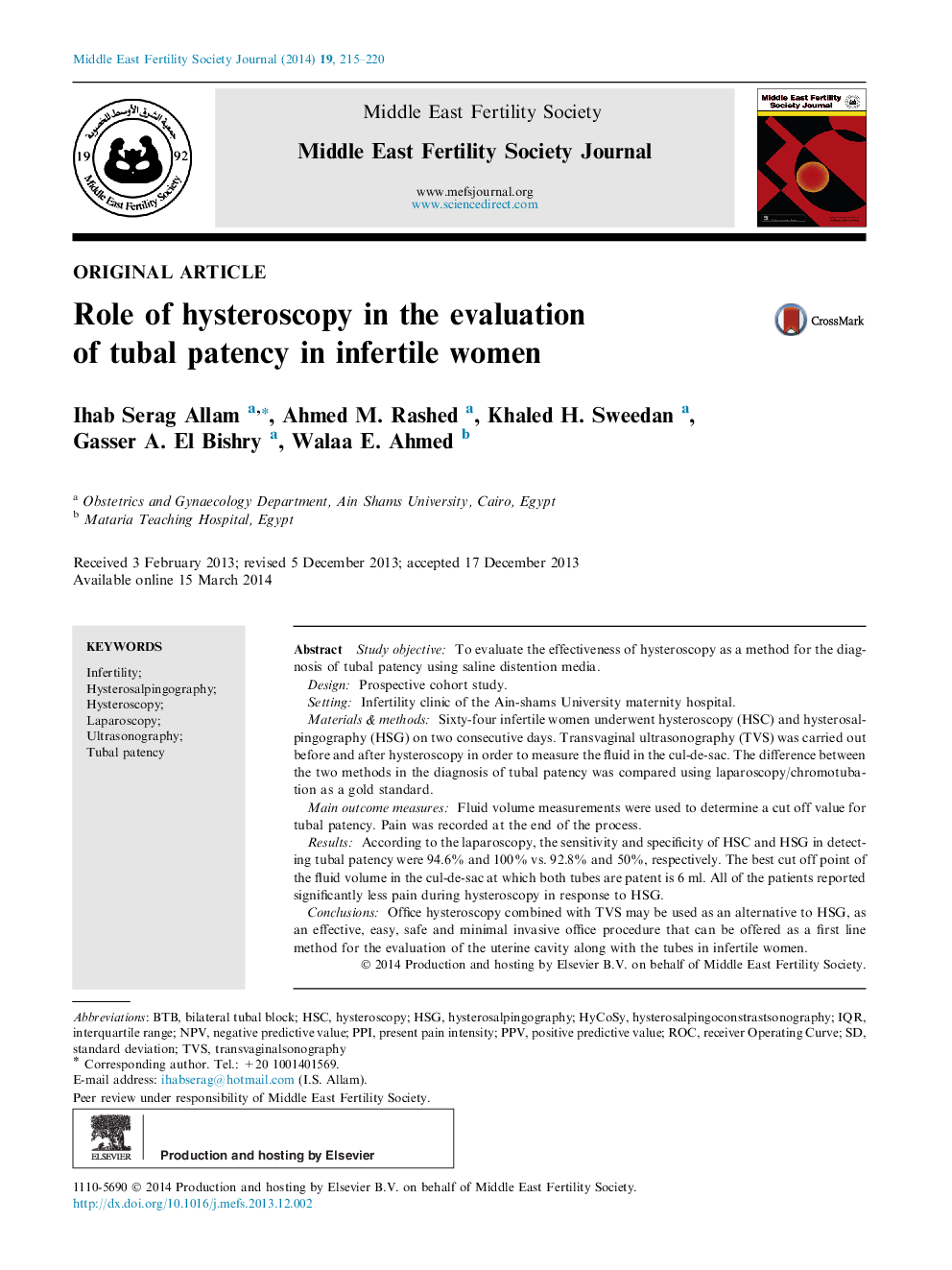| Article ID | Journal | Published Year | Pages | File Type |
|---|---|---|---|---|
| 3966148 | Middle East Fertility Society Journal | 2014 | 6 Pages |
Study objectiveTo evaluate the effectiveness of hysteroscopy as a method for the diagnosis of tubal patency using saline distention media.DesignProspective cohort study.SettingInfertility clinic of the Ain-shams University maternity hospital.Materials & methodsSixty-four infertile women underwent hysteroscopy (HSC) and hysterosalpingography (HSG) on two consecutive days. Transvaginal ultrasonography (TVS) was carried out before and after hysteroscopy in order to measure the fluid in the cul-de-sac. The difference between the two methods in the diagnosis of tubal patency was compared using laparoscopy/chromotubation as a gold standard.Main outcome measuresFluid volume measurements were used to determine a cut off value for tubal patency. Pain was recorded at the end of the process.ResultsAccording to the laparoscopy, the sensitivity and specificity of HSC and HSG in detecting tubal patency were 94.6% and 100% vs. 92.8% and 50%, respectively. The best cut off point of the fluid volume in the cul-de-sac at which both tubes are patent is 6 ml. All of the patients reported significantly less pain during hysteroscopy in response to HSG.ConclusionsOffice hysteroscopy combined with TVS may be used as an alternative to HSG, as an effective, easy, safe and minimal invasive office procedure that can be offered as a first line method for the evaluation of the uterine cavity along with the tubes in infertile women.
